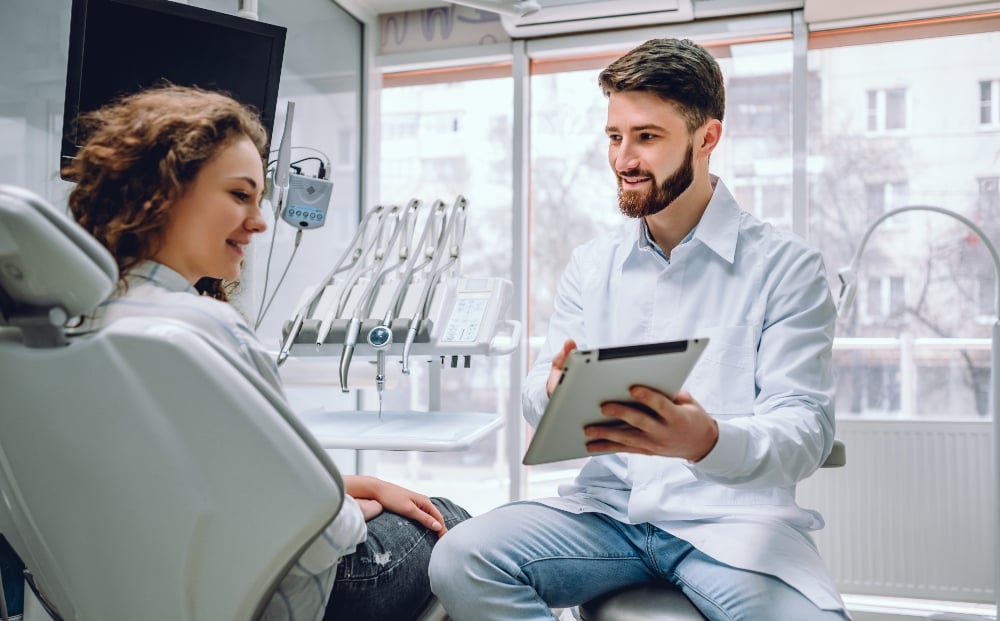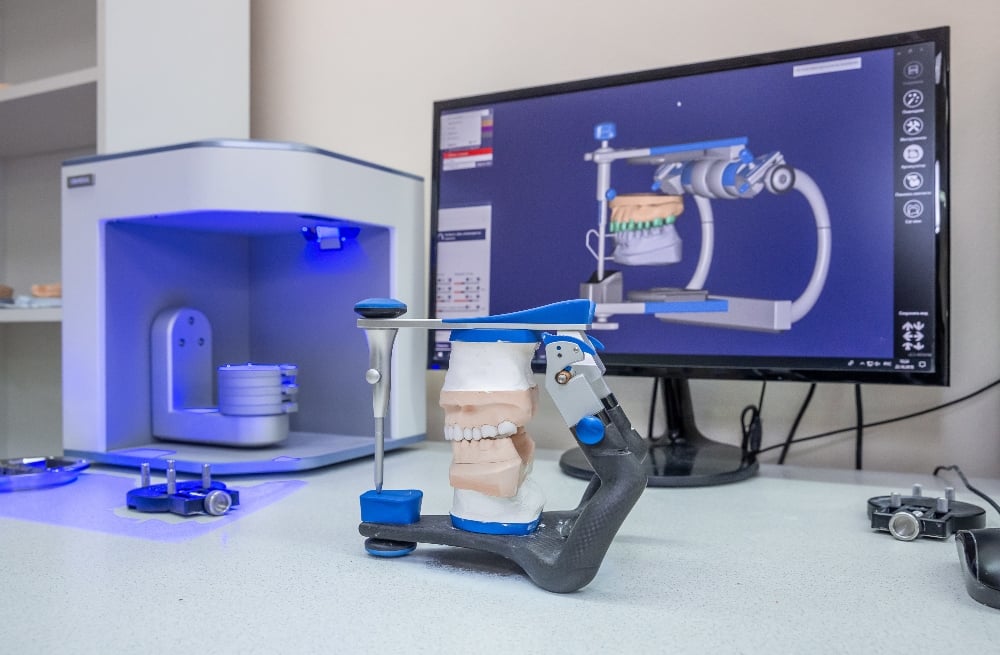Posted by Amy Carbone on Dec 11, 2019 9:30:00 AM
Can virtual reality applications benefit dental practices? Yes! Here's the what, why and how of this hot (and surprisingly beneficial) new trend.
1. Dental Procedure Simulation
Surgical simulation is not a new concept; it has been used in varying degrees across the medical field for years to provide surgeons with the ability to safely practice surgical skills. One of its newest applications is in the field of dentistry, and both dentists and patients alike are benefiting from using virtual reality to simulate dental procedures.
One company has created a robotic system that uses haptic technology or 3D touch to provide highly accurate virtual training. Moog offers a complete dental training system in a very small package, which is used by dental schools around the world. Another company, Nobel Biocare, is a leader in implant dentistry. They displayed their virtual reality oral surgery application at the 2015 International Dental Show (IDS). It offers a full, 360-degree view of the dental procedure through the eyes of the operating surgeon.
2. Office Design
Virtual reality has also been used in interior design for some time to bring design concepts to life and to make planning renovations easier and more accurate. For businesses, getting their office design right from the start is critical. Dentists, in particular, need to envision how patients will move about through the office and where key equipment and tools should be located.
Virtual reality applications can be used to help dentists who are starting their own practice to design their offices to suit their specific needs. Design elements like building layout, equipment footprints, furniture, and even floor or wall color can all be changed with the touch of a button, allowing dentists to explore near-endless combinations until they find the right fit.
3. Patient Comfort
It's no secret that for many people, going to the dentist is absolutely terrifying. Even for a simple procedure like a filling, many people have intense anxiety when visiting the dentist. In the past, solutions typically included patient education, local anesthesia, nitrous oxide, and in some cases, twilight sedation. While these remedies are still quite effective at reducing dental anxiety, virtual reality can now be added to the list.
Patients can slip on a virtual reality headset and be transported to the scenery of their choice, from castles to relaxing beaches. Over-the-ear headphones can be used to convey sounds from the scene and are also helpful at muffling the anxiety-inducing sounds of drilling and suctioning.
When used in conjunction with a local anesthetic, likely the most significant sensation patients experience during their dental appointment is pressure, not pain or discomfort. Virtual reality shows increasing promise in this area of dentistry, particularly for pediatric oral care providers.
4. Patient Education
One of the biggest obstacles to treatment acceptance is patient education. When patients don't understand what a procedure is, what it costs, and why it's needed, they often decline treatment. Not only does this affect your dental practice's bottom line, but it also impacts your patient's dental and overall health. Virtual reality now allows patients to step inside a 3-D, anatomically correct presentation of medical procedures, helping them to better understand what happens during different dental operations. Patients can often interact with the presentations, stepping into the inner parts of the body to explore them in ways that simply can't be done through traditional educational means.

When patients can clearly understand the basics of a dental procedure and why it's necessary, they're much more likely to accept treatment. Virtual reality can also be used to demonstrate the consequences of not receiving treatment, such as advanced gingivitis and bone loss.
5. Dental Equipment Diagnostics
Like any medical equipment, dental tools need to be serviced regularly and from time to time, will need to be repaired. Reducing the downtime of your equipment is important to the overall profit of your practice, and virtual reality offers a solution.
A company called Vuforia has developed an app that displays visual instructions for technicians repairing equipment. When an iPad with the app installed is held in front of the equipment being serviced, the area of the equipment will light up on the screen to direct the technician where to go and what to do there.
Although the application is only available on iPad currently, the company has plans to expand the technology to smart glasses. When worn, the glasses will provide the same key information about repairing or servicing the equipment and display them on the front of the glasses versus on a screen. This allows technicians to remain hands-free to perform repairs.
Virtual reality is a quickly growing technology that has a wide variety of applications in almost every industry. If you think you’re not quite ready for VR in your own practice, it’s at least time to start accepting that it’s part of a dynamic future in dentistry, from robotic dental procedures to appointments spent exploring virtual reality landscapes.
About Treloar & Heisel
Treloar & Heisel is a premier financial services provider to dental and medical professionals across the country. We assist thousands of clients from residency to practice and through retirement with a comprehensive suite of financial services, custom-tailored advice, and a strong national network focused on delivering the highest level of service.
Treloar & Heisel and Treloar & Heisel Property and Casualty are divisions of Treloar & Heisel, LLC.
Insurance products offered through Treloar & Heisel, LLC.
Treloar & Heisel, LLC. and its divisions do not offer information technology advice. Please consult a professional concerning this topic.



